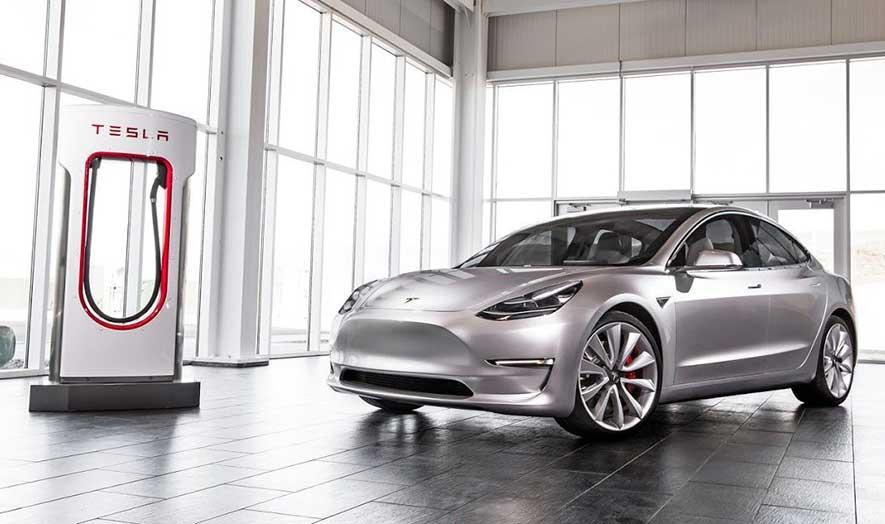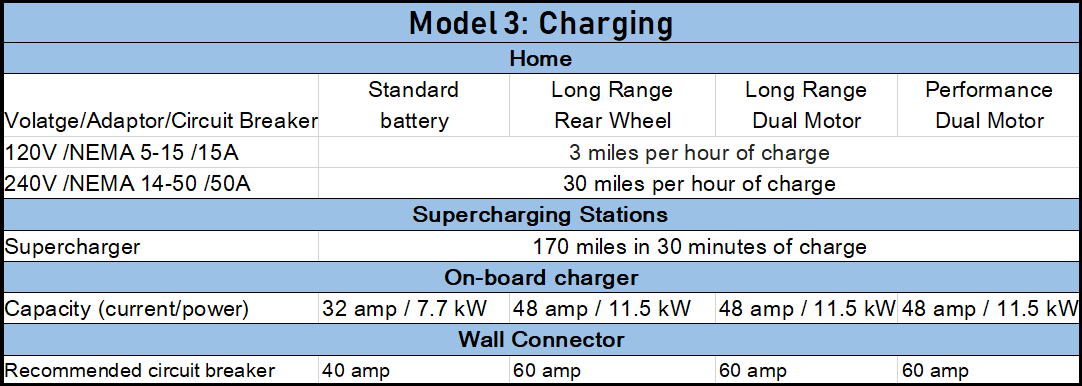First-time Tesla customers are often concerned about battery performance, how much range they can expect, how to charge properly, the supercharger network, how to use a supercharger, what it costs and other factors. We’ve put together all the information we think will be useful for anyone buying the Model 3 as a first-time Tesla customer.
If you already own a Model S or Model X, you may still find this information useful because the Model 3 is built on a different platform with a different battery cell structure that makes it lighter yet more energy-dense than any other EV battery currently in mass production. In the words of Jack Rickard of EVTV:
“But the really stunning thing is that ALL electronics and technology in the Model 3 are VERY next generation with NOTHING familiar from the Model S in any way shape or form. I haven’t seen ANYTHING even vaguely Model S or X in the vehicle. NOTHING. No DNA found. And the improvement, from what I can tell at this early stage, is not at all incremental. It’s like its from another planet.”
If you don’t find the information you’re looking for, please let us know in the comments section and I’ll send it over to my research team – basically, my left hand since we’re a massive team of only two people running this show. With that, let’s get started.
Background on the Model 3 Battery
The battery used in the Model 3 is made up of entirely different cells than the ones used in Models S and X. The older 18650 cells have now given way to the newer and more energy-dense 2170 (Samsung calls them 21700) cells.

The Model 3 battery has been developed by Tesla in tandem with Japanese electronics giant Panasonic. While the cell chemistry (cathode chemistry, to be more precise) and internal elements can be attributed to Panasonic’s expertise, the credit for the structure of the battery pack as well as the battery management system (BMS) goes to Tesla.
Musk’s company has also been partnering with Jeff Dahn’s team over in Nova Scotia to develop enhancements to basic Lithium-ion cell chemistry, and much of that research has already been integrated with Tesla’s energy products. Dahn is a pioneer in Lithium-ion battery technology and works with a team of scientists at Dalhousie University.
Model 3 Battery Specifications, Range and Warranty
The current battery on the 2018 Model 3 Long Range is a 75 kWh 350 V lithium-ion pack with a range of 310 miles. The Standard Battery Model 3 will be available in a few months, and will have a 50 kWh battery with a range of 220 miles.
These are EPA ratings for range. Real-word mileage depends on various factors like terrain type, tires used, electronics usage, extra fittings, regenerative braking level, etc. At least one instance has been documented of the Model 3 Long Range RWD doing 322.3 miles on less than a full charge and the air conditioning on – with power to spare.
Read: Tesla Model 3 Does 322 Miles with the Air Conditioning On, and Power to Spare
Battery Warranty: “Vehicles with Long Range Battery – 8 years or 120,000 miles (100,000 miles for Standard Range Battery), whichever comes first, with minimum 70% retention of Battery capacity over the warranty period.”
“New Teslas include the following as standard equipment:
- Mobile Connector (20 feet)
- Adapter for standard 120 volt household outlets (NEMA 5-15)
- Adapter for higher power 240 volt outlet (NEMA 14-50)
- Adapter for public charging stations (SAE J1772)
- Cable organizing bag
All new Tesla vehicles include a second generation Mobile Connector:


As with any home improvement project involving the electrical system, a permit and city or county inspection may be required. Ask your electrician to specify what the local regulatory requirements are for your area.”
Some utility companies offer a time-of-use energy rate or second smart meters for electric vehicle owners. Contact your utility to inquire about energy rate plans that are available for electric vehicle owners.
Additional federal, state and local incentives can be found on the Department of Energy alternative fuels data center.”
Charging On the Go
Supercharging
Supercharging Rate – DC: Charging time – 170 miles of range in 30 minutes
Supercharging to Full Charge – ~1 hour 25 minutes
Supercharger Cost – Tesla assumes this at $0.26 per kilowatt hour | Supercharger Cost Estimator – Click Here | ~$20 for 300 miles worth of charge
Supercharger Locations
Current Figure (Sep 4, 2018): 1,332 Supercharger Stations with 10,901 Superchargers
Destination Charging
Tesla has made provisions for Model 3 and other Tesla EV owners to charge at their destinations when traveling. Destination points include hotels, restaurants, shopping centers and other public locations.
Practical Tips for Charging
- Always keep your battery within a 10% to 90% range – 30% to 70%, ideally
- Maintain an ideal charging speed – about 8 kW with a 70% limit
- Small charges are good for the battery; charge 10% to 20% daily based on usage
Watch this video to see how these parameters are defined:




